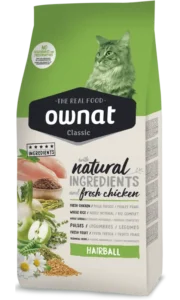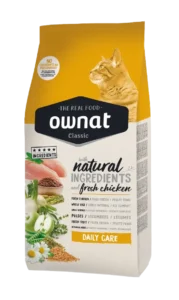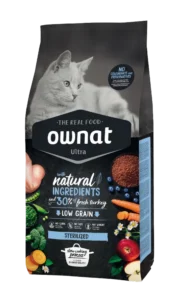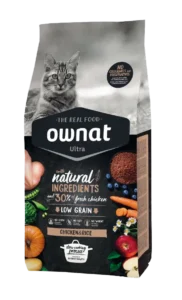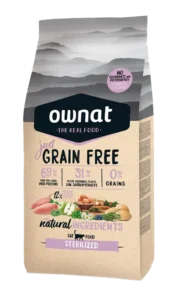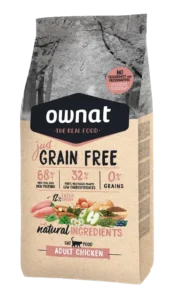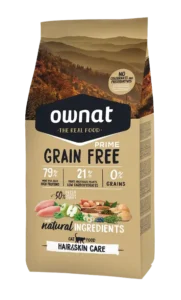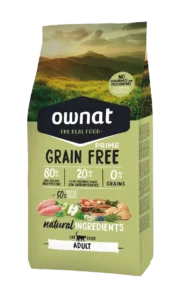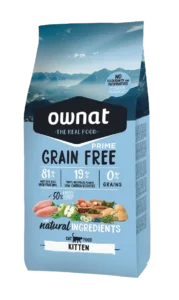Ownat
Classic - Fresh Fish
Adult
Regular
Indoor and Outdoor
Click to reveal the score breakdown
Tap to view ingredients, guaranteed analysis and more
Ingredients
Dehydrated meats
22%
Fish (fresh fish 10% before extrusion, dehydrated fish 5%)
15%
Whole wheat*
15%
Chicken fat
Whole barley*
9%
Whole maize*
9%
Whole-grain rice*
6%
Whole peas*
3%
Maize protein
Brewer’s yeast*
2%
and also:
Hydrolysed chicken protein, apple* (1%), salmon oil, beet pulp, fructo- and mannan-oligosaccharides, aromatic herbs 0.02% (fennel*, camomile flower*, green anise*), yucca schidigera*NATURAL INGREDIENTS
Vitamins and Additives
Vitamin A 15000 IU
Vitamin C 100 mg
Vitamin D3 1500 IU
Vitamin E 100 IU
and also:
Taurine (1000mg), Copper (copper amino acid chelate, hydrated) (5mg), Manganese (manganous oxide) (30mg), Zinc (zinc oxide) (100mg), Zinc (zinc amino acid chelate, hydrated) (7mg), Iron (ferrous sulphate, monohydrate) (30mg), Iodine (potassium iodide) (2mg), Selenium (sodium selenite) (0.1mg), With natural antioxidants
Guaranteed Analysis
Crude Protein
30%
Crude Fat
14%
Crude Fiber
2%
Moisture
8%
Crude Ash
8%
Calcium
1.4%
Phosphorus
1%
Metabolizable Energy
3790 kcal/kg
Product last updated: June 15, 2024, 5:10 PM
Please hold on while we’re getting the best offers for you
7617



